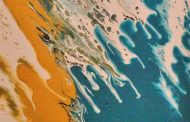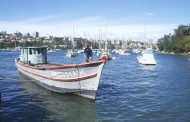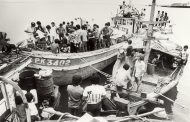1. Guernica
Guernica is gray, black and white, 3.5 metre (11 ft) tall and 7.8 metre (25.6 ft) wide, a mural-size canvas painted in oil. This painting can be seen in the Museo Reina Sofía in Madrid. Picasso’s purpose in painting it was to bring the world’s attention to the bombing of the Basque town of Guernica by German bombers, who were supporting the Nationalist forces of General Franco during the Spanish Civil War. Picasso completed the painting by mid-June 1937. Picasso exhibited his mural-size painting at the Spanish display at the Exposition Internationale des Arts et Techniques dans la Vie Moderne (1937) (Paris International Exposition) in the 1937 World’s Fair in Paris and then at other venues around the world. The San Francisco Museum of Art (later SFMOMA) gave the work its first public, free appearance in the United States from 27 August – 19 September. The Museum of Modern Art in New York City then mounted an important Picasso exhibition on 15 November 1939 that remained on view until 7 January 1940, entitled: Picasso: 40 Years of His Art, that was organized by Alfred H. Barr (1902–1981), in collaboration with the Art Institute of Chicago. The exhibition contained 344 works, including Guernica and its studies.
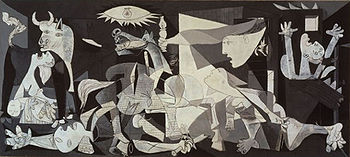
Guernica shows suffering people, animals,
and buildings wrenched by violence and chaos
Interpretations of Guernica vary widely and contradict one another. This extends, for example, to the mural’s two dominant elements: the bull and the horse. Art historian Patricia Failing said, “The bull and the horse are important characters in Spanish culture. Picasso himself certainly used these characters to play many different roles over time. This has made the task of interpreting the specific meaning of the bull and the horse very tough. Their relationship is a kind of ballet that was conceived in a variety of ways throughout Picasso’s career.”
In “The Dream and Lie of Franco,” a series of narrative sketches also created for the World’s Fair, Franco is depicted as a monster that first devours his own horse and later does battle with an angry bull. Work on these illustrations began before the bombing of Guernica, and four additional panels were added, three of which relate directly to the Guernica mural.
Picasso said as he worked on the mural: “The Spanish struggle is the fight of reaction against the people, against freedom. My whole life as an artist has been nothing more than a continuous struggle against reaction and the death of art. How could anybody think for a moment that I could be in agreement with reaction and death? … In the panel on which I am working, which I shall call Guernica, and in all my recent works of art, I clearly express my abhorrence of the military caste which has sunk Spain in an ocean of pain and death.
In his chef d’oevre, Picasso seems to be trying to define his role and his power as an artist in the face of political power and violence. But far from being a mere political painting, Guernica should be seen as Picasso’s comment on what art can actually contribute towards the self-assertion that liberates every human being and protects the individual against overwhelming forces such as political crime, war, and death.
A painter, draughtsman, and printmaker, Goya served under three Spanish kings and was associated with several stylistic movements during his artistic career. Goya’s works reflect his conscious individuality in relation to a rapidly changing world, especially during Spain’s conflicts with France.
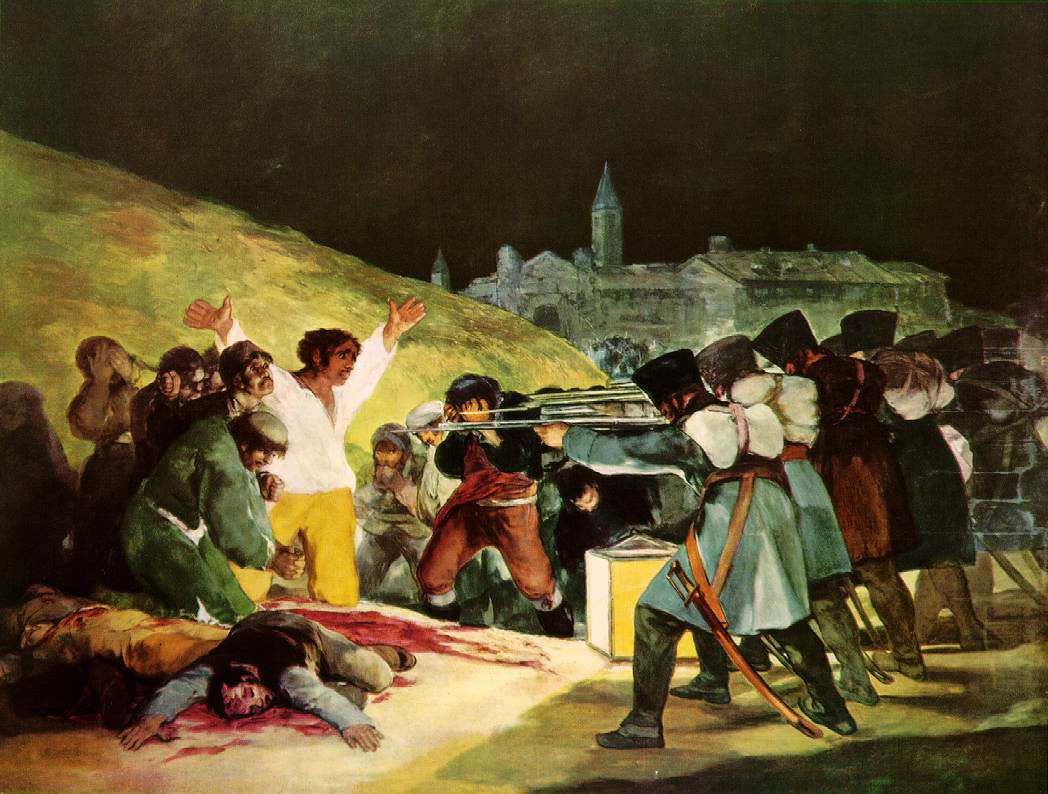
Francisco de Goya y Lucientes – Los fusilamientos del tres de mayo – 1814
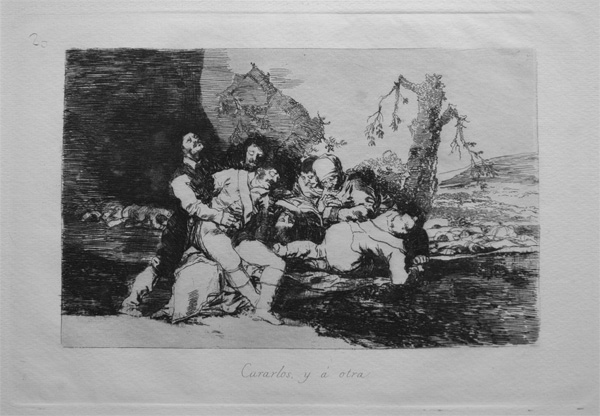
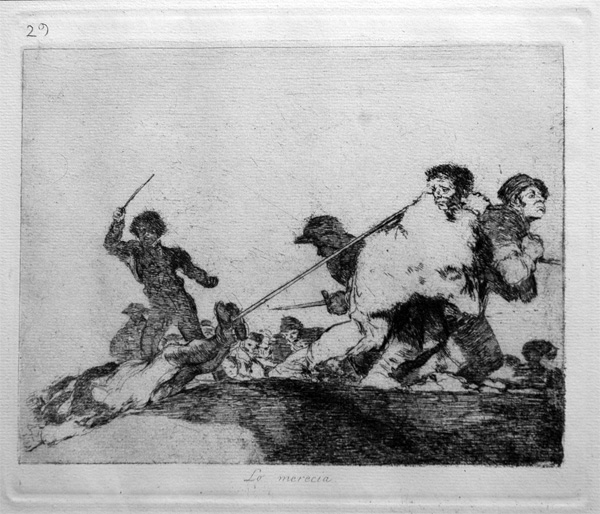
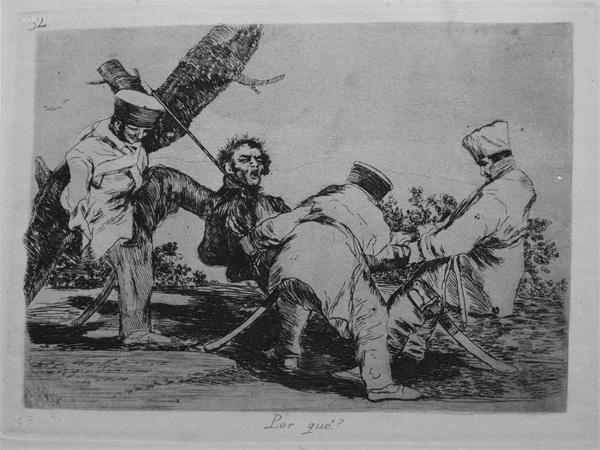
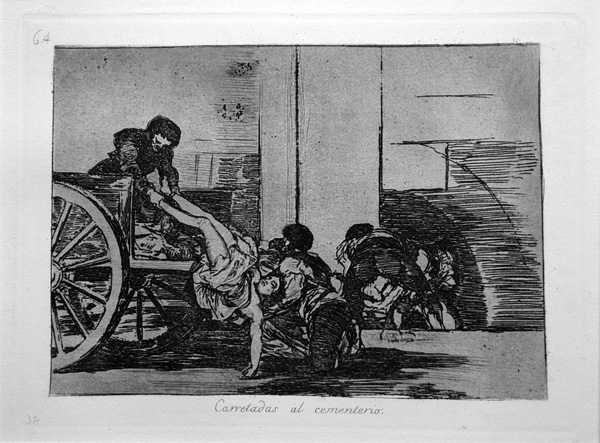
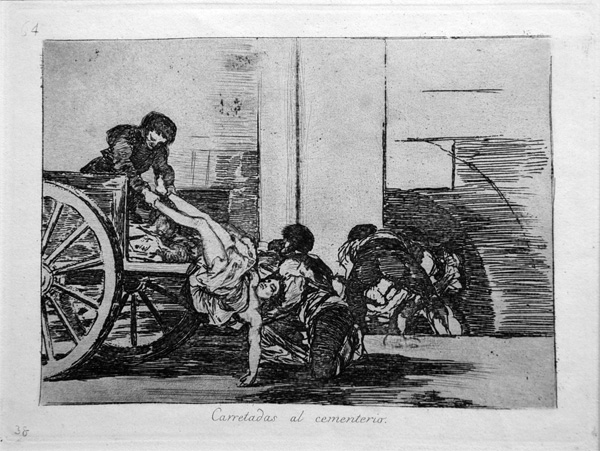
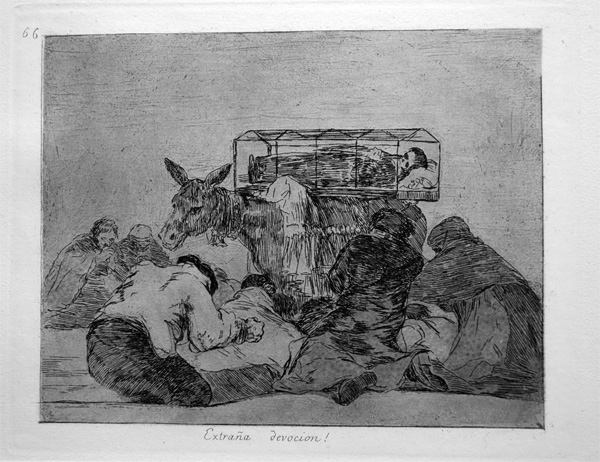
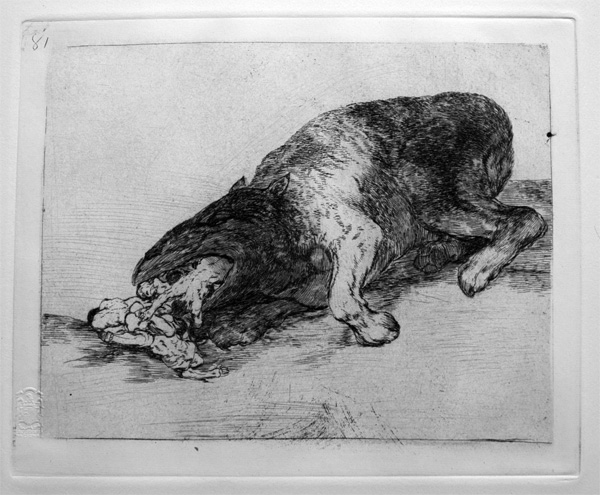


In October 1808, Goya was called to war-torn Saragossa early in the Peninsula War to paint Spain’s triumphant efforts over the invading French armies. He recorded the death and destruction he observed there in numerous drawings and small paintings. From theses sketches, Goya created the 82 plates that compose his famous Disasters of War series.
GOTTFRIED HELNWEIN
THE DISASTERS OF WAR
In memory of Francisco de Goya
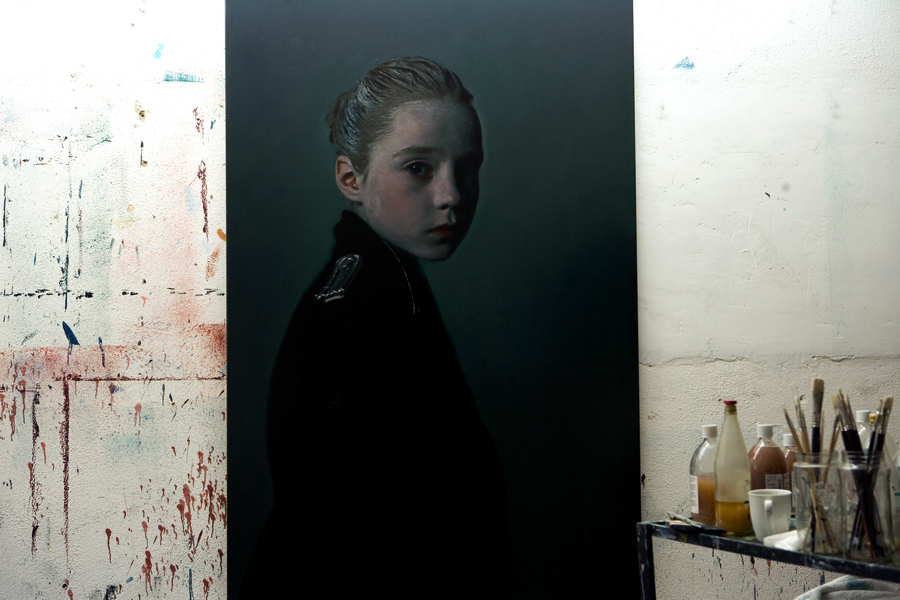
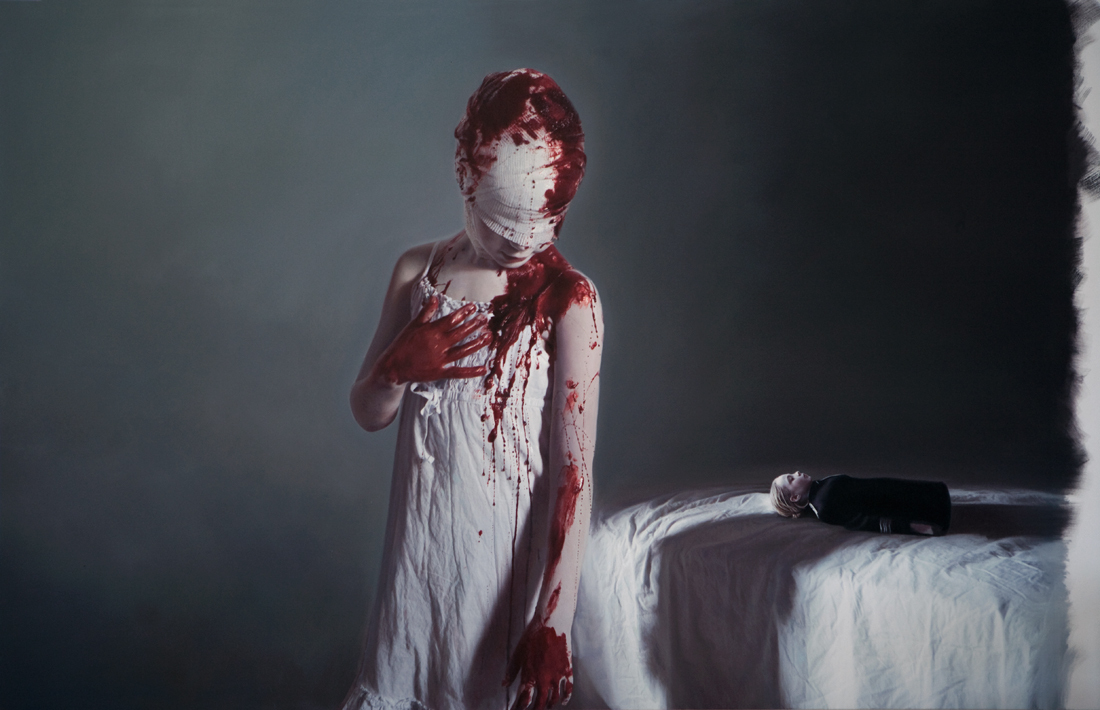
GOTTFRIED HELNWEIN – THE DISASTERS OF WAR In memory of Francisco de Goya
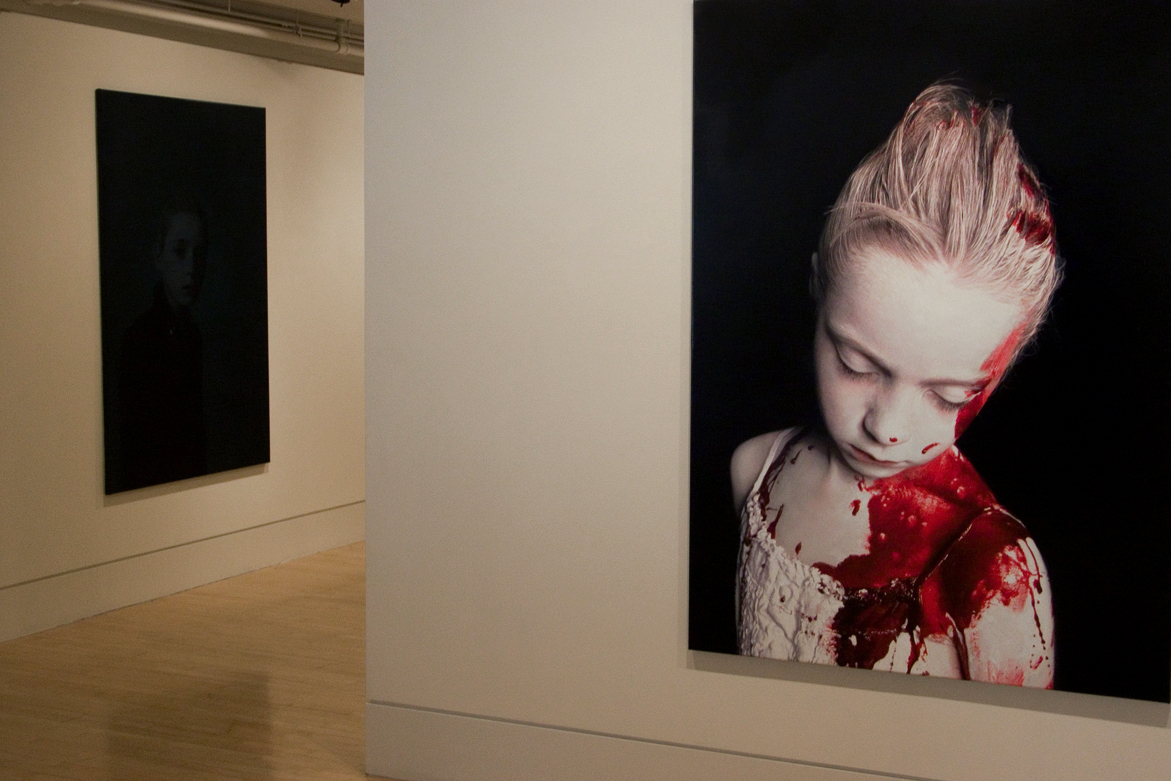
GOTTFRIED HELNWEIN The Disasters of War”, Modernism San Francisco 2007


